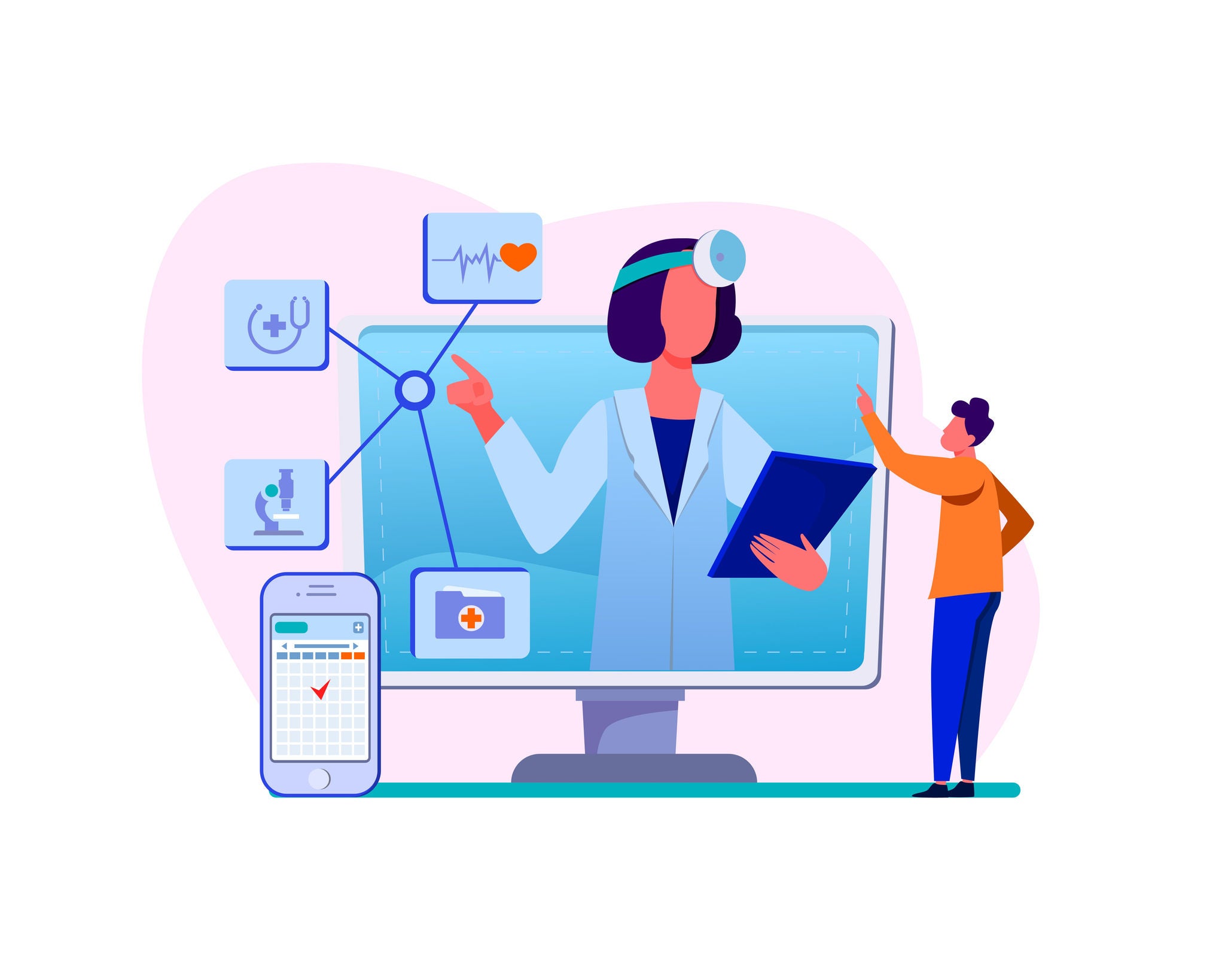
Picture: www.freepik.com
Digital transformation in healthcare isn't a new phenomenon but the need for change has never been more urgent. The biggest catalyst has been the Covid-19 pandemic, which has stretched physical hospital resources to the limit all over the world.
This sentiment was echoed strongly in the webinar "Tackling the Second Wave with Remote Monitoring: Technology at the Forefront Confirmation" that took place on 29 July. The virtual dialogue, attended by clinicians and tech representatives, was organised by the Healthcare Information and Management Systems Society (HIMSS) Asia Pacific.
"We all know and realise that to effectively transform the way medicine is practiced today, we have to leverage heavily on digitalisation," said speaker Mr Benedict Tan, Group Chief Digital Strategy Officer at SingHealth, who pointed to recent innovations deployed at SingHealth institutions that have dynamically improved patients' healthcare journey.
For instance, during the peak of the pandemic SingHealth introduced a smart multi-lingual chatbot DR COVID which is hosted on Telegram. It enhances care for Covid-19 patients at community care facilities by allowing patients – mostly migrant workers - to communicate easily with the care team, enabling close monitoring of their health and timely clinical and psychological interventions. It also minimises the risk of viral transmission between patients and healthcare staff.
A collaboration between SingHealth hospitals birthed the SG-Inspire, a cost-effective ventilator that can be operated remotely. Unlike conventional ventilators, the SG-Inspire does not require pressurised gas to function and can be manufactured quickly, to overcome global shortages of ventilators in times of crisis.
Other innovations have included a bedside tablet installed with a myCare app which allows patients to access their daily care schedule, view medical test results, communicate with clinicians and ask questions was piloted across SingHealth hospitals and an Outpatient Pharmacy Automation System (OPAS), which automates the prescription filling process.
Next on Mr Tan's to-do list is remote patient monitoring using non-obtrusive trackers that patients can wear outside the hospital. These devices should be able to send data rapidly, including alerts in the case of deteriorations, back to healthcare providers.
"Things are getting cheaper, better, faster, smaller and less intrusive. These advancements set the stage and make it ripe for further deployment and development of remote monitoring solutions," he said, citing also continually-evolving technologies and Singapore's tech- and health-savvy population as positive factors for remote monitoring to potentially become mainstream.
Benefits aplenty
From an administrator's standpoint, the upsides to remote monitoring include cost savings and improved workforce productivity, to the tune of several hundred billion dollars across decades as several US studies have shown.
However, Mr Tan was quick to clarify, "I must add that all these pale in comparison to the lives we are saving and the lives we are improving."
What's more, remote monitoring using wearable biosensors and smart watches has been shown to provide better quality of care and management of chronic diseases because of patient empowerment, informed clinicians and timely interventions. In a study published in the May/June 2011 edition of Nurse Educator, 16 per cent of nurses said that mobile devices helped them avoid at least one error in clinical treatment, indicating improved patient safety.
As a nod to the high-tech future of patient monitoring, Mr Tan emphatically stated, "SingHealth will be happy to work with any partners to make remote monitoring a reality and transform the way care is provided."
Putting the tech to the test
Nurses at Singapore General Hospital (SGH) piloted the vital signs trackers (including a blood pressure cuff and biosensor) between April and July 2019 among a group of 43 patients. It was by and large a feasibility study that focused on productivity gains, shared Ms Ang Shin Yuh, Deputy Director, Nursing Quality, Research and Transformation at SGH.
"The results were quite intuitive. The longer you [do it], the more time the nurses will save," she added. As compared to in-person checks, approximately nine minutes were saved by remotely monitoring a patient hourly for six hours, and up to 22 minutes were shaved when the hourly monitoring stretched across 12 hours.
In spite of a slight learning curve at the start, the nurses reported high satisfaction at the end of the study. Patients were also pleased that the tracking devices were comfortable, felt safe and did not restrict movement or affect sleep quality.
Success factors
The potential of wide scale deployment however is a work in progress, according to Ms Ang who said the priorities of patients, clinicians and administrators alike have to be taken into account. Success factors can range from ease of application and maintenance, patient compliance and integration of data into electronic medical records to cost effectiveness, data security and scalability.
"In general, the clinicians want this technology and see the value. But the challenge is in the details. The implementation has to take into consideration the current workflow and the day-to-day clinical challenges," said Ms Ang who was on the ground almost every day across the duration of the study to guide nurses through the process.
Teething issues aside, the potential for transformational success is huge, with Ms Ang embracing the suggestion of nurses being "tech ambassadors". "It's inevitable because we are the ones teaching the patient how to use the device, and we're the first ones to interact with patients when there's an alarm," she said.
Ms Ang is optimistic about the way forward, adding, "I think nurses are ready to take the lead, so it's very much down to how well we can be supported at the same as we handhold the patients [on the journey]."













 Get it on Google Play
Get it on Google Play